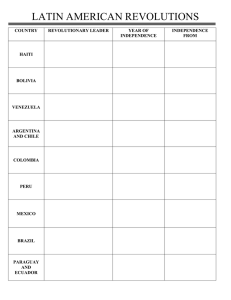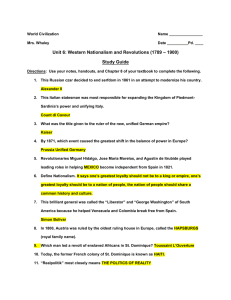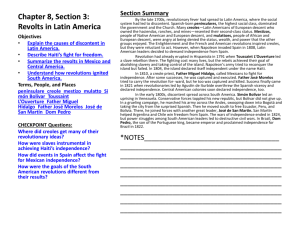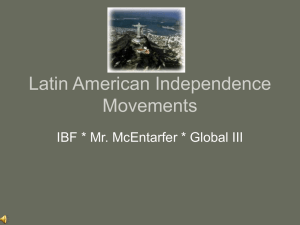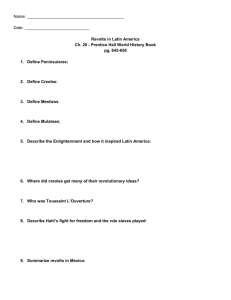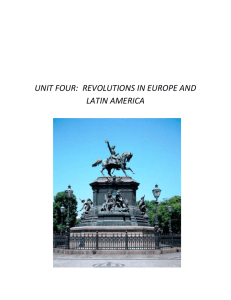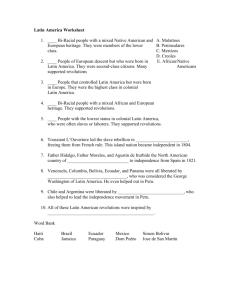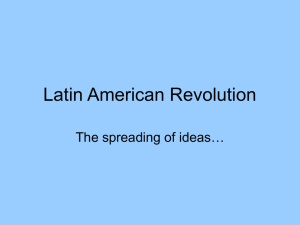Latin American Independence p. 223 227
advertisement
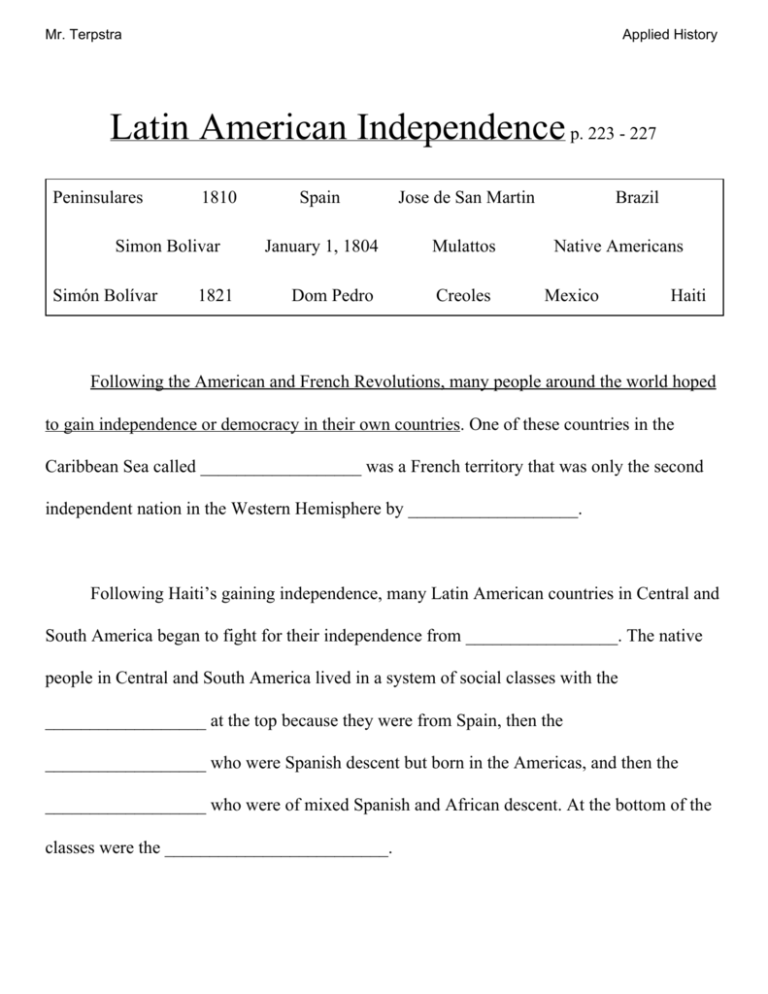
Mr. Terpstra Applied History Latin American Independence p. 223 ­ 227 Peninsulares 1810 Spain Jose de San Martin Brazil Simon Bolivar January 1, 1804 Mulattos Native Americans Simón Bolívar 1821 Dom Pedro Creoles Mexico Haiti Following the American and French Revolutions, many people around the world hoped to gain independence or democracy in their own countries. One of these countries in the Caribbean Sea called __________________ was a French territory that was only the second independent nation in the Western Hemisphere by ___________________. Following Haiti’s gaining independence, many Latin American countries in Central and South America began to fight for their independence from _________________. The native people in Central and South America lived in a system of social classes with the __________________ at the top because they were from Spain, then the __________________ who were Spanish descent but born in the Americas, and then the __________________ who were of mixed Spanish and African descent. At the bottom of the classes were the _________________________. Mr. Terpstra Applied History In 1808, Napoleon took the throne away from King Ferdinand VII of Spain and put his brother on the throne. In the year _____________, revolutions started to break out around Central and South America. Two important generals, one from Venezuela name_________________________ and one from Argentina named_________________________________, helped to lead independence movements in many South American countries during the 1810s through 1820s. In central America, Padre Miguel Hidalgo and Jose Maria Morelos led a movement in _____________________, and gained independence for the new nation in ________________________. In _______________________ in the year 1822, ________________________ declared independence from his father’s kingdom of Portugal. By the mid 1800s, most Latin American nations had gained their independence and started developing their own forms of governance. Soon after, the spirit of nationalism that was used to unify people in Central and South American countries could be seen in Europe as well.
